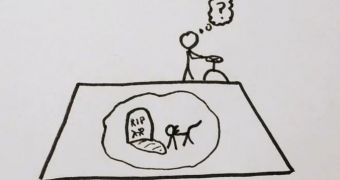Schrödinger's Cat is a famous thought experiment that also represents one of the foundations of quantum mechanics. It was first proposed in 1935, by famed Austrian physicist Erwin Schrödinger. In its current interpretation, it provides the theoretical basis for quantum entanglement and superposition.
These are the two main principles of quantum mechanics. The former states that two particles, for example, can be connected by a “spooky action at a distance,” as Albert Einstein called it, which means that changes affecting one will affect the other instantly, regardless of the distance between the two.
Superposition is a concept used to describe a system that exists in two states simultaneously. In Schrödinger's experiment, the locked-up cat is in such a state, since it is both dead and alive at the same time.
Even though the Austrian expert originally developed this experiment as a paradox, its “conclusions” have already been applied in practice, such as for example in efforts to construct quantum computers.

 14 DAY TRIAL //
14 DAY TRIAL //